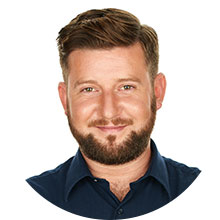
Special Effects The Making of
In the world of creative industries, the rise of AI technology has sparked both excitement and fear. For the make-up industry, particularly for make-up artists (MUAs), AI poses both potential opportunities and concerns. Will AI replace traditional artistry? Will it render the skills and imagination of human artists obsolete? These were questions at the forefront of our minds as we embarked on the Guardians of the Lake project—a story of haunted spirits, three brave teenagers, and the eerie setting of a cursed lake—all born from the collaboration between AI storytelling and human-applied make-up design.The Making of
The Guardians of the Lake:
– A Creative Blend of AI and Make-up Artistry
Our mission was clear: to showcase how AI and make-up artistry can coexist, enhancing each other rather than competing. Through this project, we wanted to demonstrate that while AI can assist in generating narratives and concepts, it cannot replicate the creative touch, instinct, and human connection that make-up artists bring to the table. Here’s how we brought this vision to life.
The Story’s Genesis: AI as a Creative Partner
The foundation of the project was laid using an AI storytelling platform. Our marketing team, with a vision of the story on hand, input key details into the system, which allowed the AI to generate the initial story that would form the backbone of the campaign. They provided the software with essential story elements: an eerie small town, a cursed lake, and three teenagers on a mission to confront ghostly figures from the past. From these inputs, the AI crafted the first draft of the narrative.What was intriguing about this process was the speed and efficiency with which AI was able to weave together disparate ideas into a cohesive story. However, while the AI gave us a solid structure, the heart and soul of the story—the emotions, the deeper character motivations, the visual atmospheres—came from human inspiration.
The core themes of the story were deeply human: tragedy, loss, redemption, and the confrontation of fear. These themes drove the creation of the characters—The Drowned Maiden, The Lost Fisherman, The Forgotten Huntsman, and the teenagers—each with their unique personalities and personal struggles, all of which were developed and expanded by human writers. The AI-generated story acted as a springboard, but the human touch was vital in giving the story depth, emotion, and resonance.
From Words to Visual Concepts: Mood Boards and Design Inspiration
With the story in hand, we moved to the visual design phase. Using a second AI platform, the marketing team input the story details and then instructed the program to generate images of the mood and story of the campaign. Creating a cohesive foundation for the whole story in which the make-up team could start to develop character looks from. This next stage relied heavily on human intuition and artistry. Our team of make-up artists collaborated to bring the story’s haunting atmosphere to life. We started with researching images, taking inspiration from folklore, classic horror films, and nature photography. Some of the prosthetic pieces were even eventually designed from actual plant roots and foliage. Make-up tests were carried out, and elements were tweaked and changed until we arrived at the final looks.
The lake, the dense forest, and the abandoned boathouse were central to the eerie mood of the story. Although these settings would be created later using digital tools, the mood images were essential in guiding the make-up designs for the characters and helping us understand how the environments would affect the characters' appearance. How would the cold mist of the lake show on their faces? How would dirt, sweat, and exhaustion from traversing the haunted woods affect their looks? These were all questions that guided the make-up process.
Finding Rosie Hardy: The Visionary Behind the Digital World
One of the most pivotal contributors to the campaign was Rosie Hardy, the talented photographer and digital artist whose vision helped bring the haunting world of the story to life. Rosie came highly recommended following her incredible work for Disney, where she was tasked with creating fantastical backdrops behind real-life models depicting the classic Disney princesses in human form. Her ability to seamlessly blend reality with digital fantasy made her the perfect fit for our project.
From the start, we knew that The Guardians of the Lake required a visionary like Rosie, someone who could transform a simple studio set into a foreboding world of misty lakes, haunted forests, and eerie boathouses. Her skills in crafting digital environments that feel both grounded and otherworldly were essential in bringing the story’s haunting atmosphere to life.
Rosie worked closely with the entire team, photographing the actors on set and then building out the richly detailed environments that would envelop the characters in post-production. With her artistic eye, she ensured that every digital element—from the swirling mists over the lake to the spectral glow of the forest—enhanced the mood and emotion of the narrative. Her mastery in digital editing elevated the entire campaign, allowing the physical make-up designs to shine while immersing the characters in their ghostly world.

The On-Set Process: The Collaboration of AI and Human Artistry
On the days of the shoot, the vision of blending AI and human creativity truly came to life. We shot in a studio with basic props, focusing on the characters and their interactions. Anything the characters would touch was physically present on set. Costumes, weapons, rocks, the boat, and a small pool of water for the maiden to submerge into. The lake, forest, and boathouse—essential elements of the story—were not physically present, of course. Instead, we relied on minimal set dressing, leaving the intricate backgrounds to be added digitally in post-production. This allowed the focus to remain on the actors and the make-up, emphasizing that the human aspect of the story—expressions, emotions, and the artistry of the MUAs—would be the heart of the campaign.The make-up artists were tasked with bringing both the teenagers and the ghostly characters to life, applying effects that reflected each of their unique stories. Jake’s transformation from clean-cut teenager to battle-worn hero was complemented by Lily’s ethereal look, embodying her deep connection to the spirits. Sam’s edgy, rebellious appearance gradually gave way to vulnerability. The haunting presence of the Drowned Maiden, the Lost Fisherman, and the Forgotten Huntsman was captured through chilling, detailed make-up that told the tragic stories of these spectral figures. Each of these looks embodied a different layer of the narrative, from the eerie pallor of the Maiden to the weathered, sorrowful appearance of the Fisherman and the rugged, ghostly presence of the Huntsman. These transitions were a true testament to the skill and artistry of the MUAs on set, merging character development with visual storytelling.

Post-production played its own role, with the backgrounds and special effects added digitally to complete the haunted world of Hollow Creek. However, even with AI-generated landscapes, the human touch remained vital in the final edits. The real magic of the project lay in the marriage of digital technology with the tactile art of make-up—each enhancing the other to create a seamless whole.
Addressing Concerns: AI vs. Make-up Artistry
One of the main concerns we faced heading into this project was the fear that AI might overshadow or even replace traditional make-up artistry. MUAs across the industry have expressed anxiety about the rise of AI in creative fields, fearing that their craft could be automated or diminished.However, Hollow Creek proved the opposite. While AI helped speed up the story creation process and assisted with digital backgrounds, it was the make-up artists who brought the human element—the heart of the story—to life. No matter how advanced AI becomes, it cannot replicate the instinctive creativity and emotional depth that human artists bring to their work.
This project showcased that AI can be a valuable tool, especially for pre-production elements like storytelling and set design, but it cannot replace the hands-on artistry of make-up. Instead, AI can free up artists to focus on what they do best: creating intricate, detailed, and emotionally resonant designs.

The Future: A Harmonious Blend of AI and Artistry
The Guardians of the Lake campaign demonstrated that AI and traditional make-up artistry do not have to be at odds. Rather, they can complement each other, with AI assisting in the early stages of production and visual effects, while MUAs continue to define the characters’ emotional and physical journeys.In the end, the success of this campaign showed that make-up artistry remains irreplaceable in our opinion, even in an increasingly digital world. The future of creative industries lies not in one replacing the other but in a harmonious blend, where AI and human creativity work together to push the boundaries of storytelling and visual design.
Make-up, after all, is an inherently human art—an expression of emotion, identity, and transformation that AI can assist with but never replace. In the professional industry, actors and models will often comment on how integral both make-up and hair & costume are in them being able to embody a character. Much like in everyday life, make-up cannot be digitally applied for the office. Make-up is a process that will remain a human creation; anything else in fact, can’t be considered make-up, it’s digital artistry, they’re two very different things.
Paul Merchant, the head of make-up on this campaign, shared, “…AI will continue to expand and become an everyday factor in our lives and within the make-up industry itself; there is no denying that fact. The key is to face the fear and find a balance within the middle that feels authentic. We did not create any of the make-up designs using AI platforms. Neither did we retouch any of the actual make-up on this campaign using in post production. I like to think this showcases how human creativity and artificial intelligence platforms can complement each other rather than replacing the human element. What I loved about this project was that the creative team was able to concentrate solely on make-up. As a make-up brand, we have often spent countless hours building a story to get to the point where the make-up design can begin. This gave us more time and energy to channel into our craft.”



